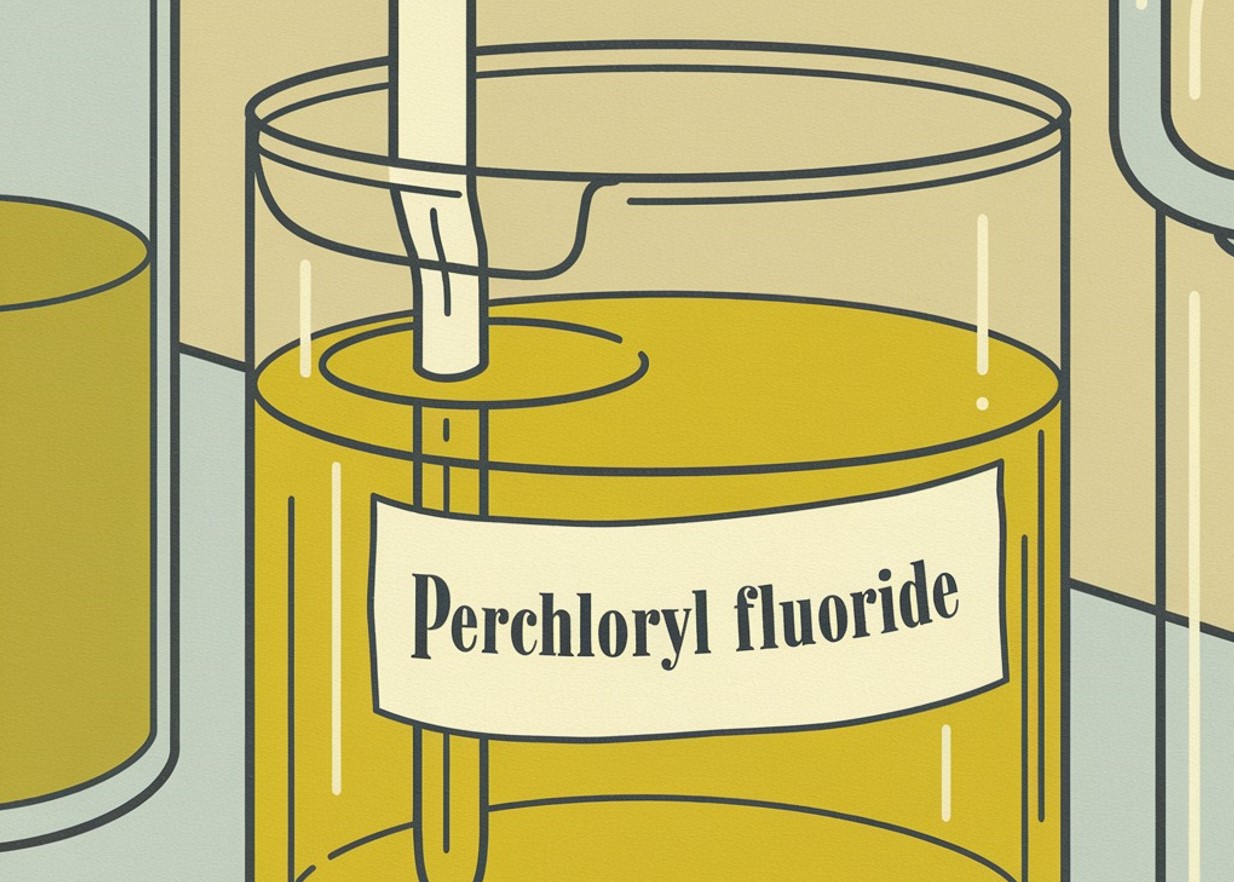
Perchloryl fluoride might sound like something out of a sci-fi movie, but it's a real chemical with some pretty cool uses. This compound, also known as ClO3F, is a colorless gas that packs a punch in the world of chemistry. It's used in rocket propellants, etching processes, and even as a fluorinating agent. But what makes perchloryl fluoride so special? Its unique properties—like being highly reactive and having a strong oxidizing ability—set it apart. Whether you're a science enthusiast or just curious about the elements that make our world tick, these 25 facts will give you a deeper understanding of this fascinating substance.
Key Takeaways:
- Perchloryl Fluoride: A Reactive Compound with Diverse Uses This colorless gas is highly reactive and used in rocket propellants, pharmaceuticals, and the electronics industry. Safety precautions and proper handling are crucial due to its toxic nature.
- Environmental Impact of Perchloryl Fluoride Improper disposal can lead to harmful effects on the environment, including water contamination and contribution to global warming. Efforts to reduce emissions and regulations aim to minimize its environmental impact.
What is Perchloryl Fluoride?
Perchloryl fluoride, also known as chlorine oxyfluoride, is a chemical compound with the formula ClO3F. It is a colorless gas with a pungent odor, used in various industrial applications. Let's dive into some fascinating facts about this compound.
- Perchloryl fluoride is a highly reactive compound, often used in chemical synthesis and industrial processes.
- The compound is known for its oxidizing properties, making it useful in rocket propellants and explosives.
- It is a colorless gas at room temperature, but it can be liquefied under pressure.
- Perchloryl fluoride has a boiling point of -46.3°C, which means it vaporizes quickly at room temperature.
- The compound is toxic and can cause severe respiratory issues if inhaled in large quantities.
- It is non-flammable, which makes it safer to handle compared to other reactive gases.
- Perchloryl fluoride is often used as a fluorinating agent in organic chemistry.
- The compound can be synthesized by the reaction of chlorine trifluoride with perchloric acid.
- It has a molecular weight of 102.45 g/mol.
- Perchloryl fluoride is soluble in water, forming perchloric acid and hydrofluoric acid upon hydrolysis.
Uses of Perchloryl Fluoride
Perchloryl fluoride has a range of applications, particularly in the chemical industry. Here are some of its key uses:
- It is used as an oxidizer in rocket propellants, providing the necessary oxygen for fuel combustion.
- The compound serves as a catalyst in certain chemical reactions, speeding up the process without being consumed.
- It is employed in the manufacture of fluorinated compounds, which are used in various industrial applications.
- Perchloryl fluoride is used in the production of pharmaceuticals, particularly in the synthesis of active ingredients.
- The compound is also used in the electronics industry for etching and cleaning semiconductor materials.
Safety and Handling
Handling perchloryl fluoride requires caution due to its reactive and toxic nature. Here are some important safety facts:
- Protective gear such as gloves and goggles should be worn when handling the compound.
- It should be stored in well-ventilated areas to prevent the buildup of toxic fumes.
- In case of exposure, immediate medical attention is necessary to prevent severe health effects.
- The compound should be kept away from flammable materials despite being non-flammable itself, as it can react violently with certain substances.
- Proper disposal methods should be followed to prevent environmental contamination.
Environmental Impact
Perchloryl fluoride can have significant effects on the environment if not managed properly. Here are some environmental facts:
- The compound can decompose in the atmosphere, releasing harmful byproducts.
- It can contaminate water sources if not disposed of correctly, leading to toxic effects on aquatic life.
- Perchloryl fluoride is considered a greenhouse gas, contributing to global warming.
- Efforts are being made to reduce emissions of perchloryl fluoride in industrial processes to minimize its environmental impact.
- Regulations are in place in many countries to control the use and disposal of perchloryl fluoride, ensuring safer handling and reduced environmental harm.
Final Thoughts on Perchloryl Fluoride
Perchloryl fluoride, a fascinating compound, plays a crucial role in various industries. Its unique properties make it invaluable in rocket propellants, chemical synthesis, and even as a refrigerant. Despite its usefulness, handling it requires caution due to its reactive nature and potential health risks. Knowing these facts helps appreciate its significance and the precautions needed when working with it. Whether you're a chemistry enthusiast or just curious, understanding perchloryl fluoride sheds light on the complexities of chemical compounds. This knowledge not only broadens your scientific horizon but also highlights the importance of safety in chemical handling. So next time you hear about perchloryl fluoride, you'll have a deeper insight into its role and impact.
Frequently Asked Questions
Was this page helpful?
Our commitment to delivering trustworthy and engaging content is at the heart of what we do. Each fact on our site is contributed by real users like you, bringing a wealth of diverse insights and information. To ensure the highest standards of accuracy and reliability, our dedicated editors meticulously review each submission. This process guarantees that the facts we share are not only fascinating but also credible. Trust in our commitment to quality and authenticity as you explore and learn with us.
